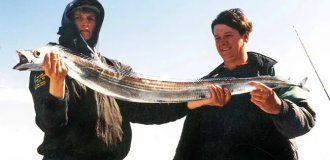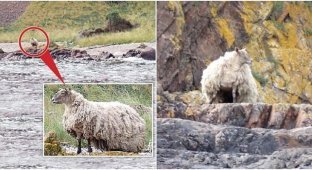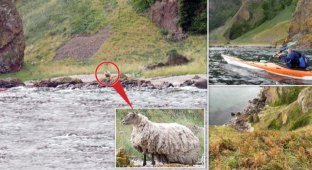Sheep or bull? Walked from the Himalayas to Greenland to survive (6 photos)
This is an unusual animal with a difficult fate and a long evolutionary path that it has traveled for the sake of survival. 
So, our hero today is the musk ox (Ovibos moschatus). As the name suggests, scientists for a long time could not figure out where to classify it as a bull or a sheep. In size, it seems to be a bull, but in appearance it looks more like a ram. 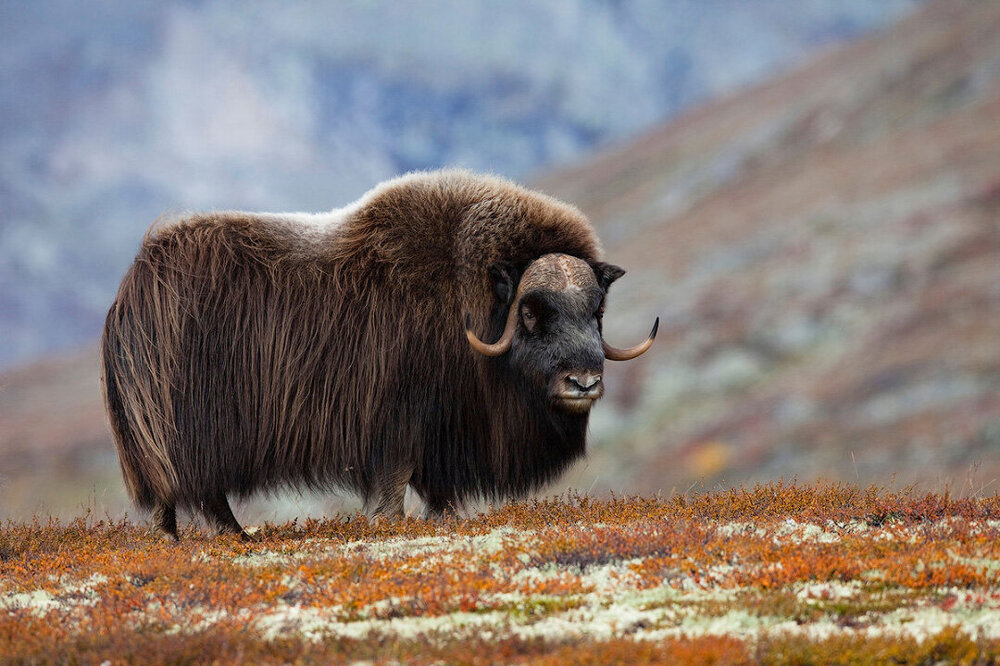
The opportunity to conduct genetic analysis, during which the origin of these unusual animals was put to rest, put an end to the debate. 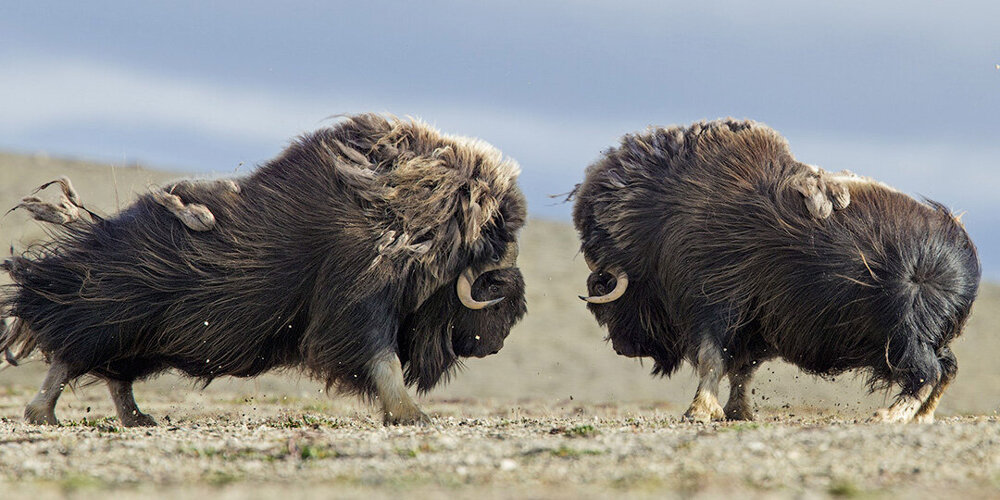
So, our hero turned out to be a ram. Although, to be precise, a goat, since sheep belong to the goat subfamily. The homeland of musk oxen was the Himalayas, where they lived undisturbed until the onset of the Ice Age, after which they began to descend to the plains in search of food and settle throughout Siberia. They moved further and further to the northeast until they crossed from Chukotka to Alaska along the Bering Strait.
Then the bulls moved east and populated the Arctic zones of the continent, and reached Greenland. At this time, people had already mastered spears and began to actively kill large Pleistocene megafauna - mammoths, woolly rhinoceroses, and, in fact, musk oxen. 
Animals had to go further and further north, where humans could not survive. As a result of such a slow retreat, musk oxen acquired a number of evolutionary adaptations that allowed them to survive in, without exaggeration, extreme conditions.
Their coat became very long, consisting of four groups: guide hairs, guard hairs, intermediate hairs and down hairs. The latter, in turn, are divided into two subgroups. Downy musk ox hair is eight times warmer than sheep hair. 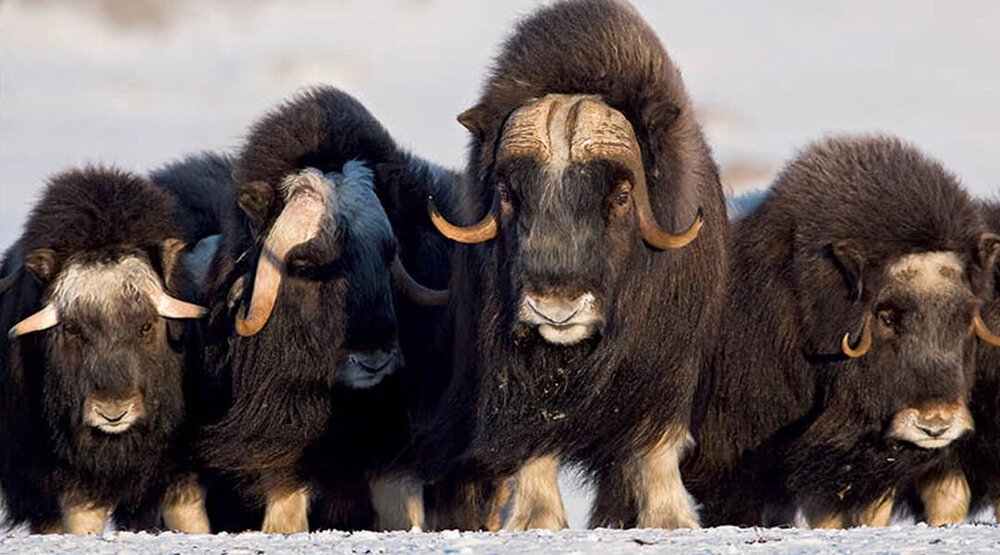
In addition, the animal looks like a parallelepiped, without protruding parts, in order to minimize heat loss. At the moment of danger, the herd lines up in a ring, with females and cubs inside. The animals feed ascetically: digging out under the snow the little vegetation that manages to grow during the short arctic summer. 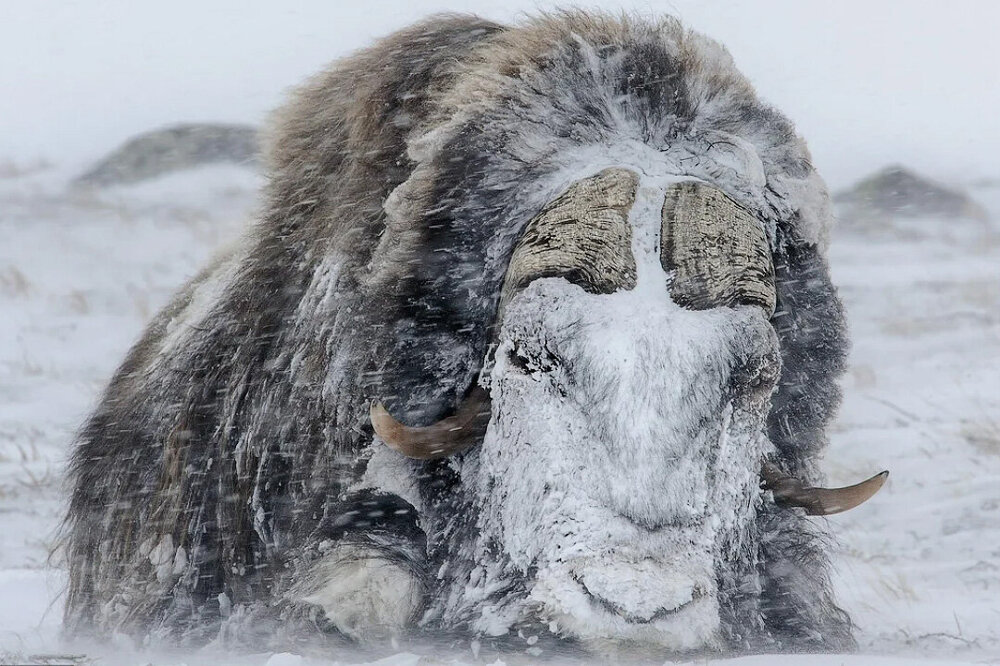
In the wild, the animal survived only in Canada and Greenland, having traveled a long way to its survival. To date, this species has been reintroduced and successfully acclimatized in our country, in particular in Taimyr, Yamal and Yakutia. Let's hope that soon the population of these wonderful animals will increase, and we will be able to see them in less extreme places






